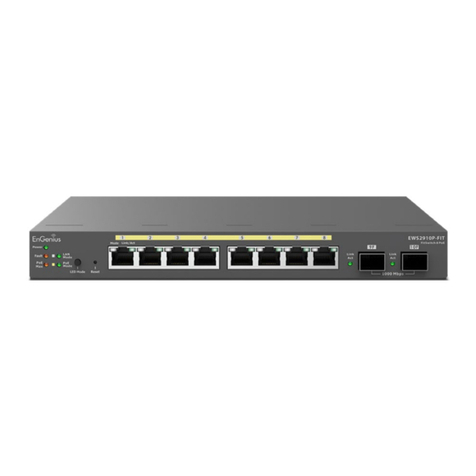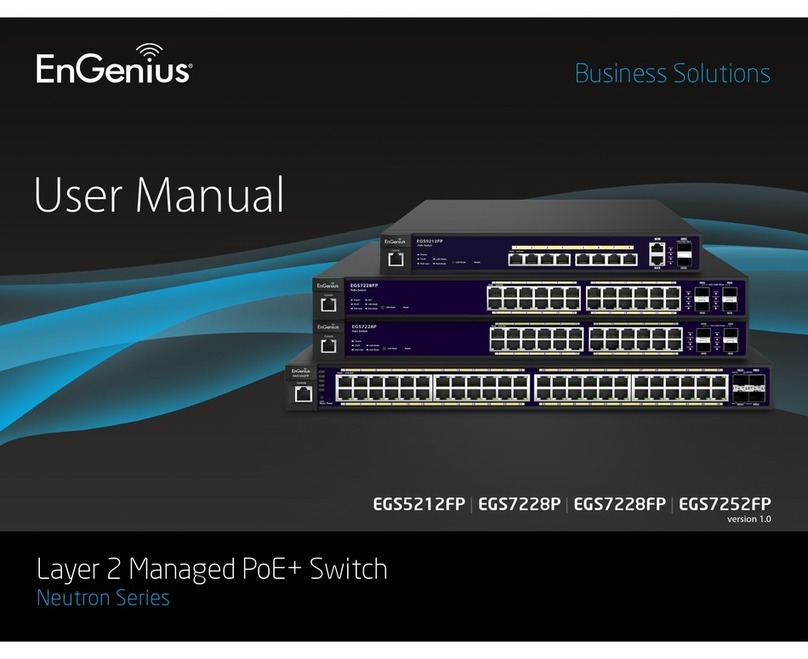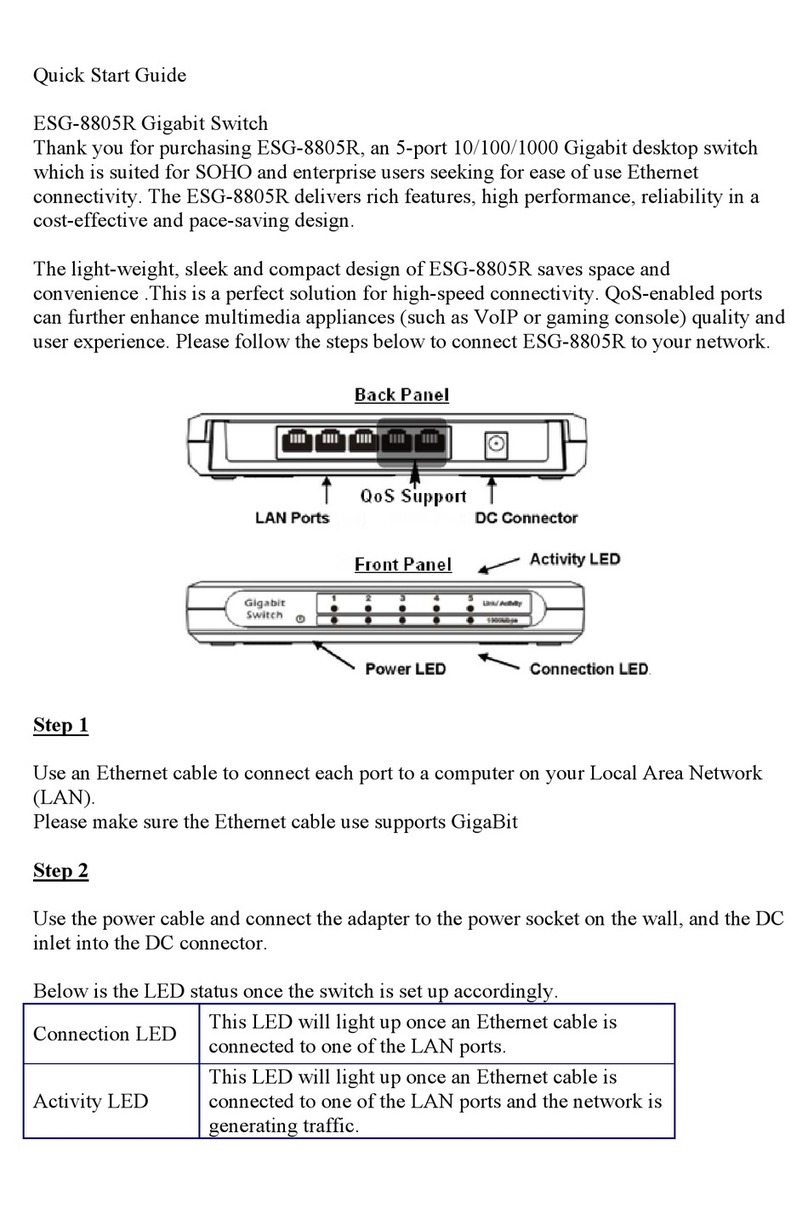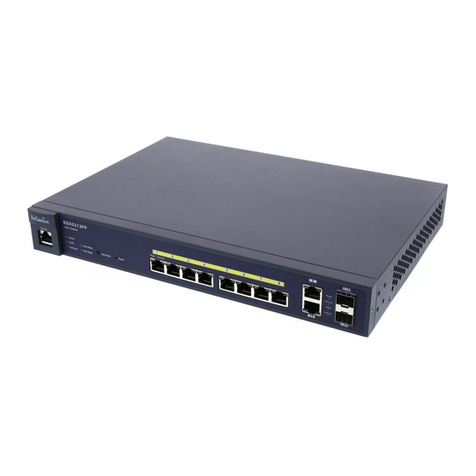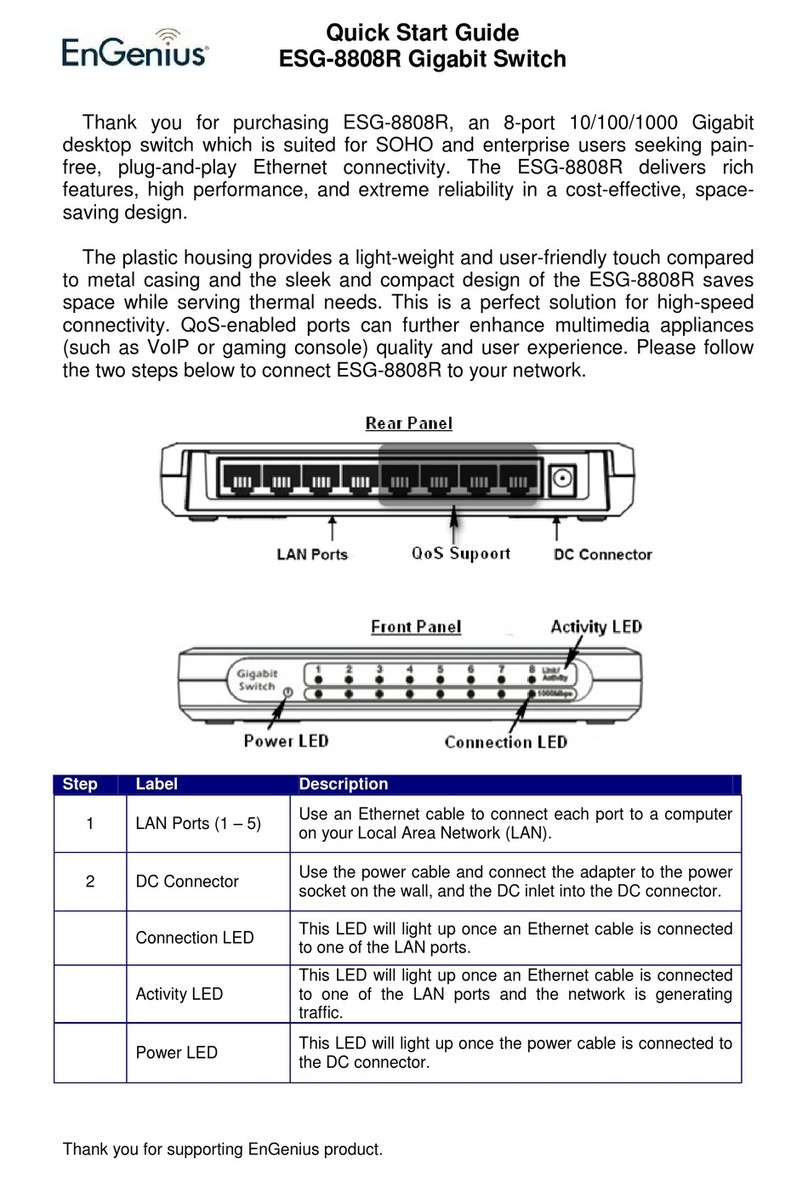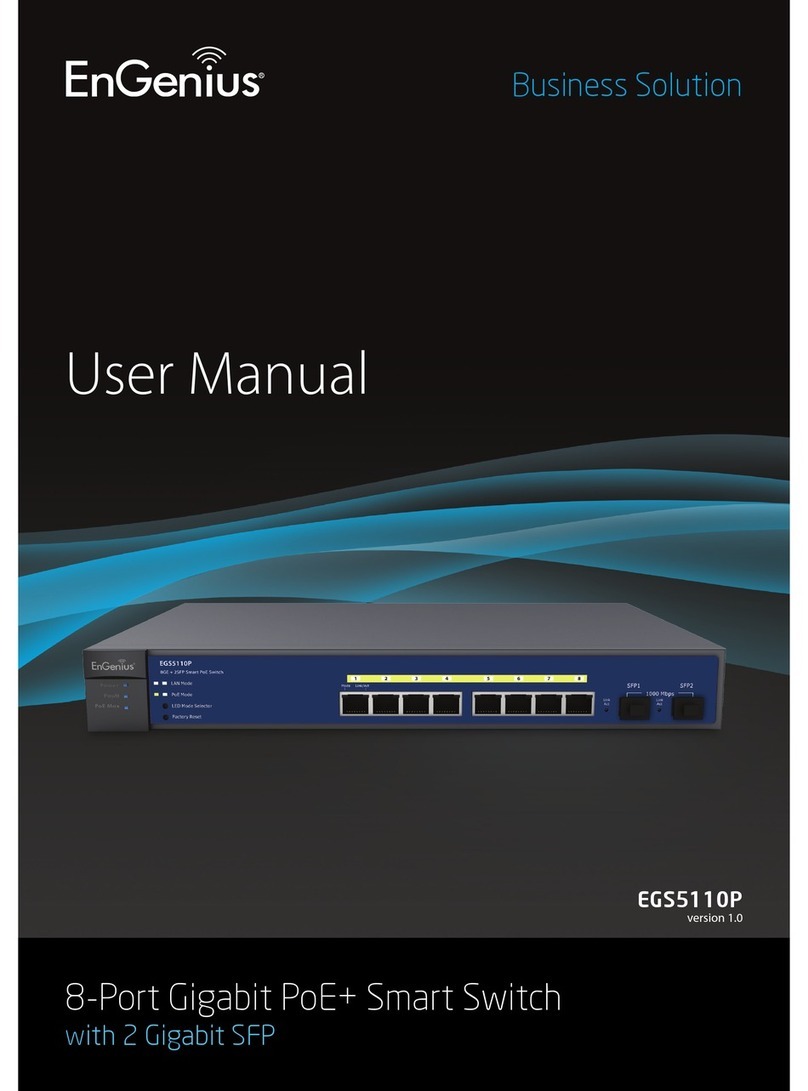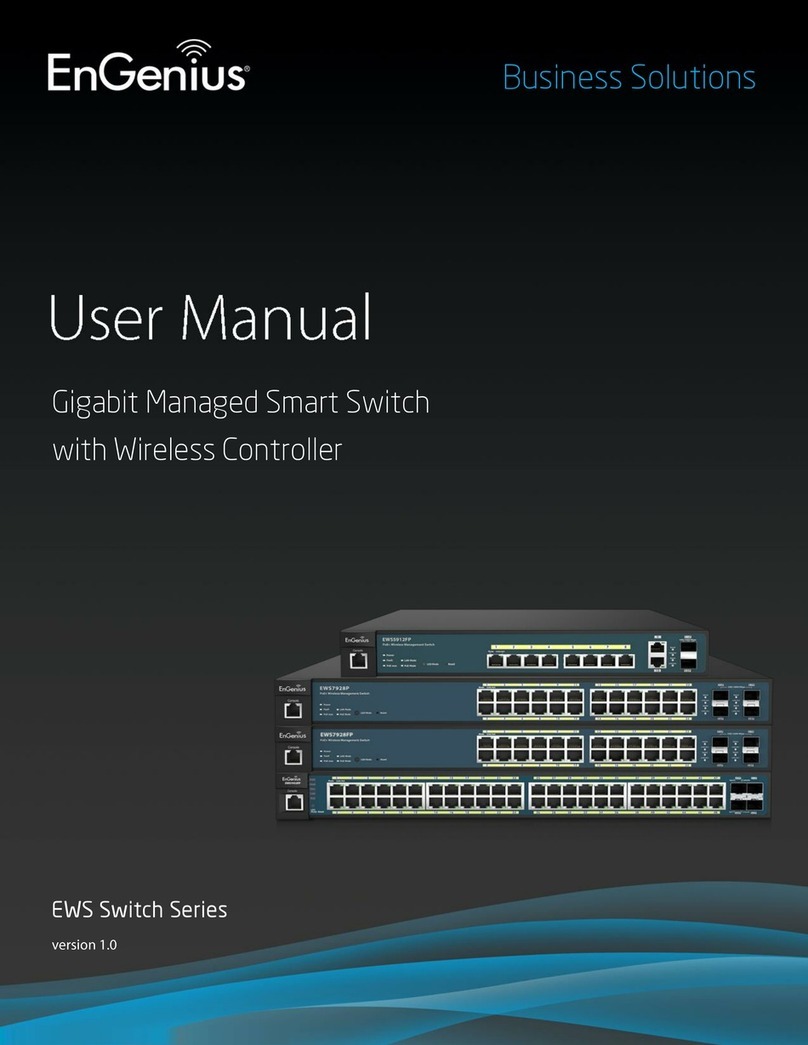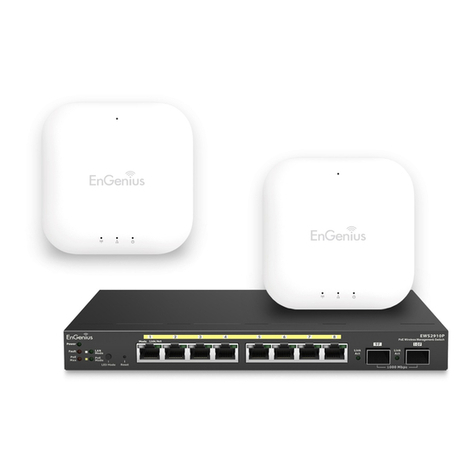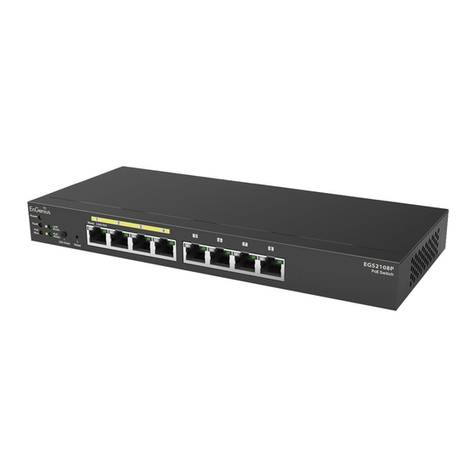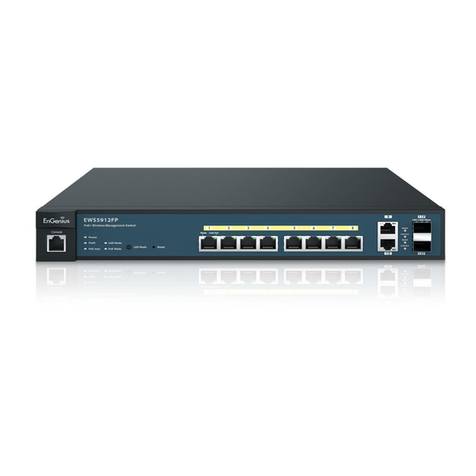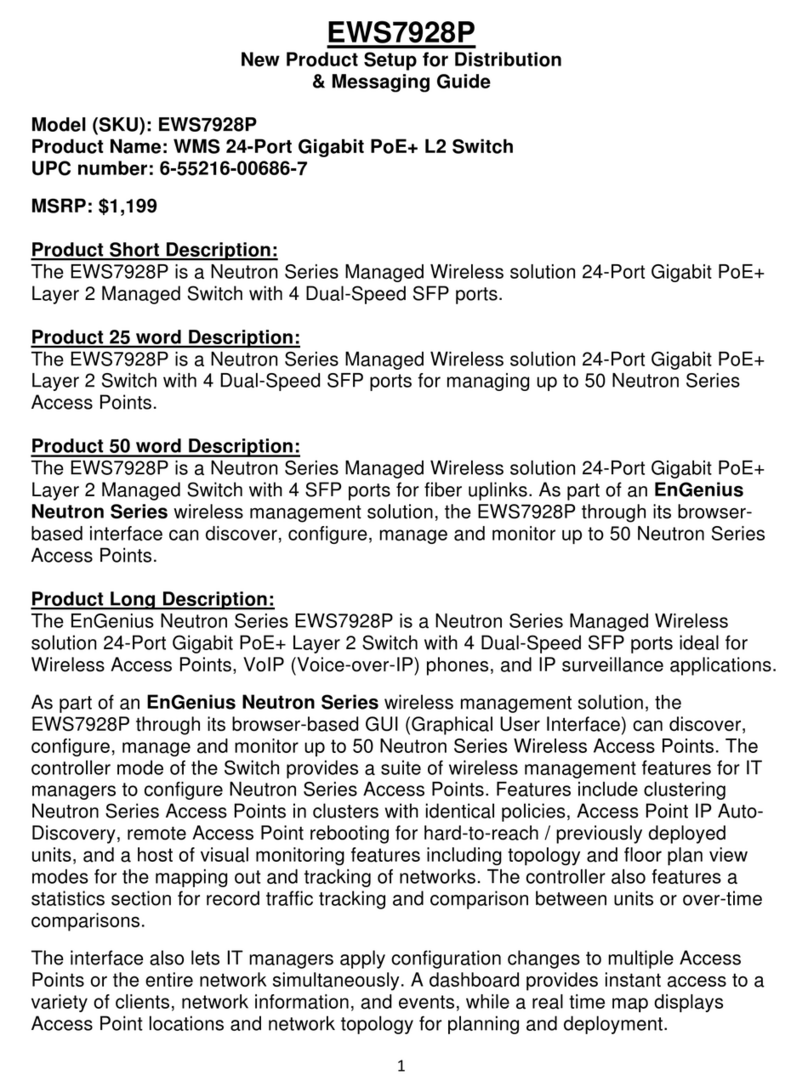The Switch User’s Guide
10Base-T Ethernet standard, designed to raise the data transmission capacity of
10Base-T from 10Mbits/sec to 100Mbits/sec. An important technology incorporated
by 100Base-T is its use of the Carrier Sense Multiple Access with Collision Detection
(CSMA/CD) protocol, which is the same protocol that 10Base-T uses, because of its
ability to work with several different types of cable, including basic twisted-pair wiring.
Both of these features play an important role in network considerations, and they
make 100Base-T an attractive migration path for those networks based on 10Base-T.
Since the 100Mbps Fast Ethernet is compatible with all other 10Mbps Ethernet
environments, it provides a straightforward upgrade and takes advantage of the
existing investment in hardware, software, and personnel training.
1.3 Switching Technology
Switching is a cost-effective way of increasing the total network capacity available to
users on a LAN. If an Ethernet network begins to display symptoms of congestion,
low throughput, slow response times, and high rates of collision, installing a switch to
a network can preserve much or all of the existing network's cabling and workstation
interface card infrastructure while still greatly enhancing the throughput for users. A
switch is a viable solution even if demanding applications, such as multimedia
production and video conferencing, are on the horizon. The most promising
techniques, as well as the best return on investment, could well consist of installing
the right mixture of Ethernet switches.
A switch increases capacity and decreases network loading by dividing a local area
network into different LAN segments. Dividing a LAN into multiple segments is one
of the most common ways of increasing available bandwidth. If segmented correctly,
most network traffic will remain within a single segment, enjoying the full-line speed
bandwidth of that segment. Switches provide full-line speed and dedicated
bandwidth for all connections. This is in contrast to hubs, which use the traditional
shared networking topology, where the connected nodes contend for the same
network bandwidth. When two switching nodes are communicating, they are
connected with a dedicated channel between them, so there is no contention for
network bandwidth with other nodes. As a result, the switch reduces considerably
the likelihood of traffic congestion. For Fast Ethernet networks, a switch is an
effective way of eliminating the problem of chaining hubs beyond the “two-repeater
limit.” A switch can be used to split parts of the network into different collision
domains, making it possible to expand your Fast Ethernet network beyond the
205-meter network diameter limit for 100BASE-TX networks. Switches supporting
both traditional 10Mbps Ethernet and 100Mbps Fast Ethernet are also ideal for
bridging between existing 10Mbps networks and new 100Mbps networks. Switching
LAN technology is a marked improvement over the previous generation of network
hubs and bridges, which were characterized by higher latencies. Routers have also
been used to segment local area networks, but the cost of a router, and the setup
and maintenance required make routers relatively impractical. Today switches are
an ideal solution to most kinds of local area network congestion problems.
1.4 Key Features
The Switch was designed for easy installation and high performance in an
7
